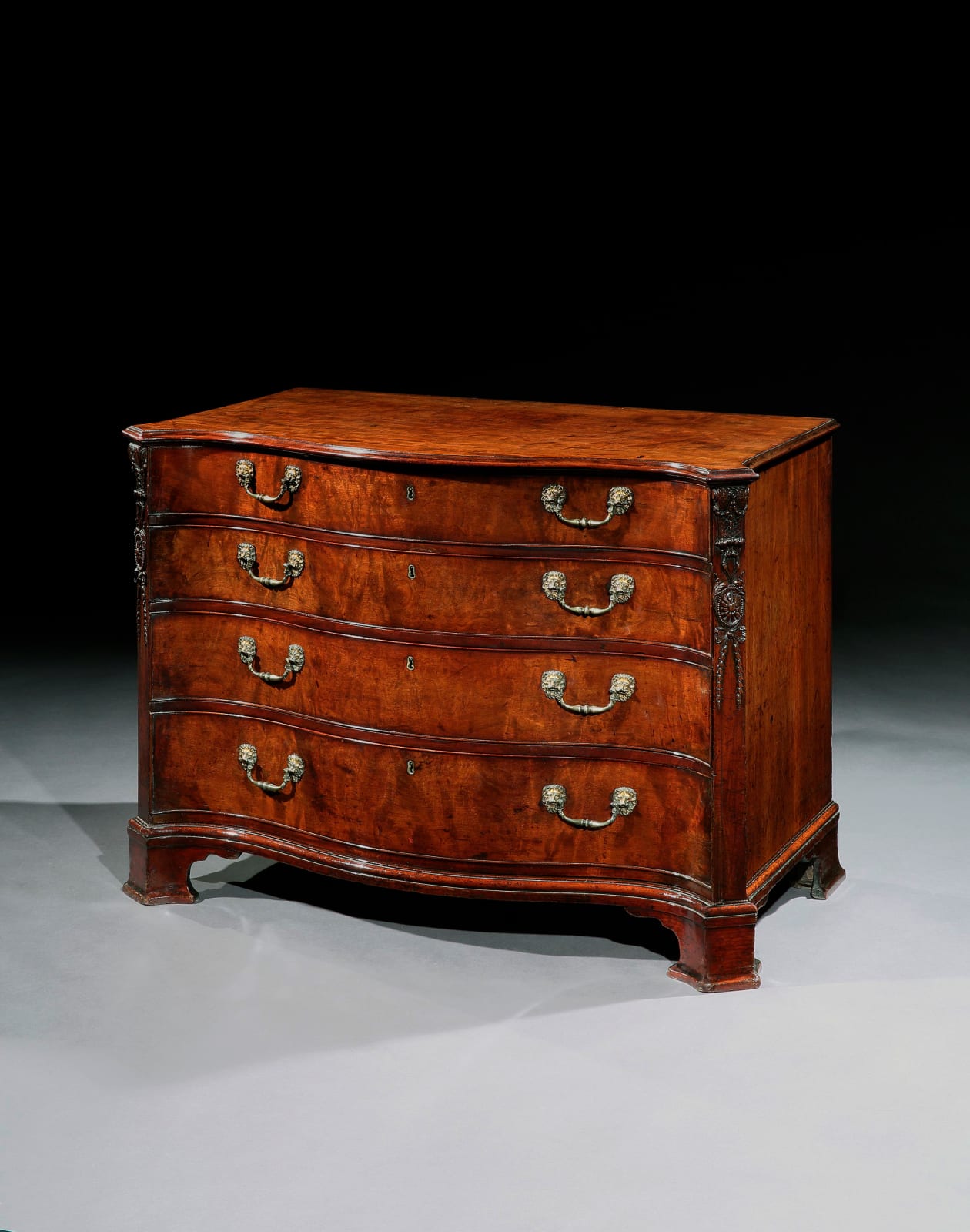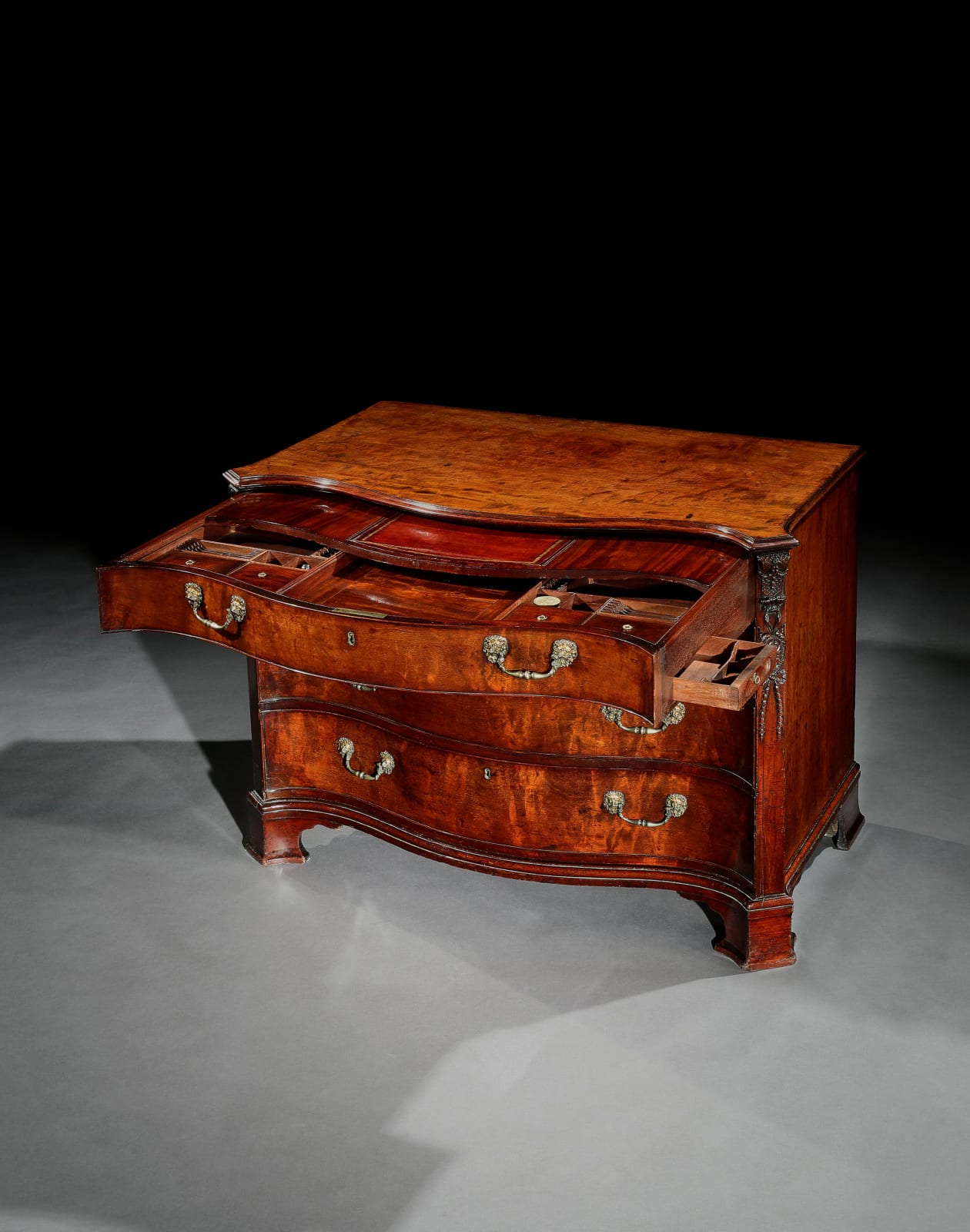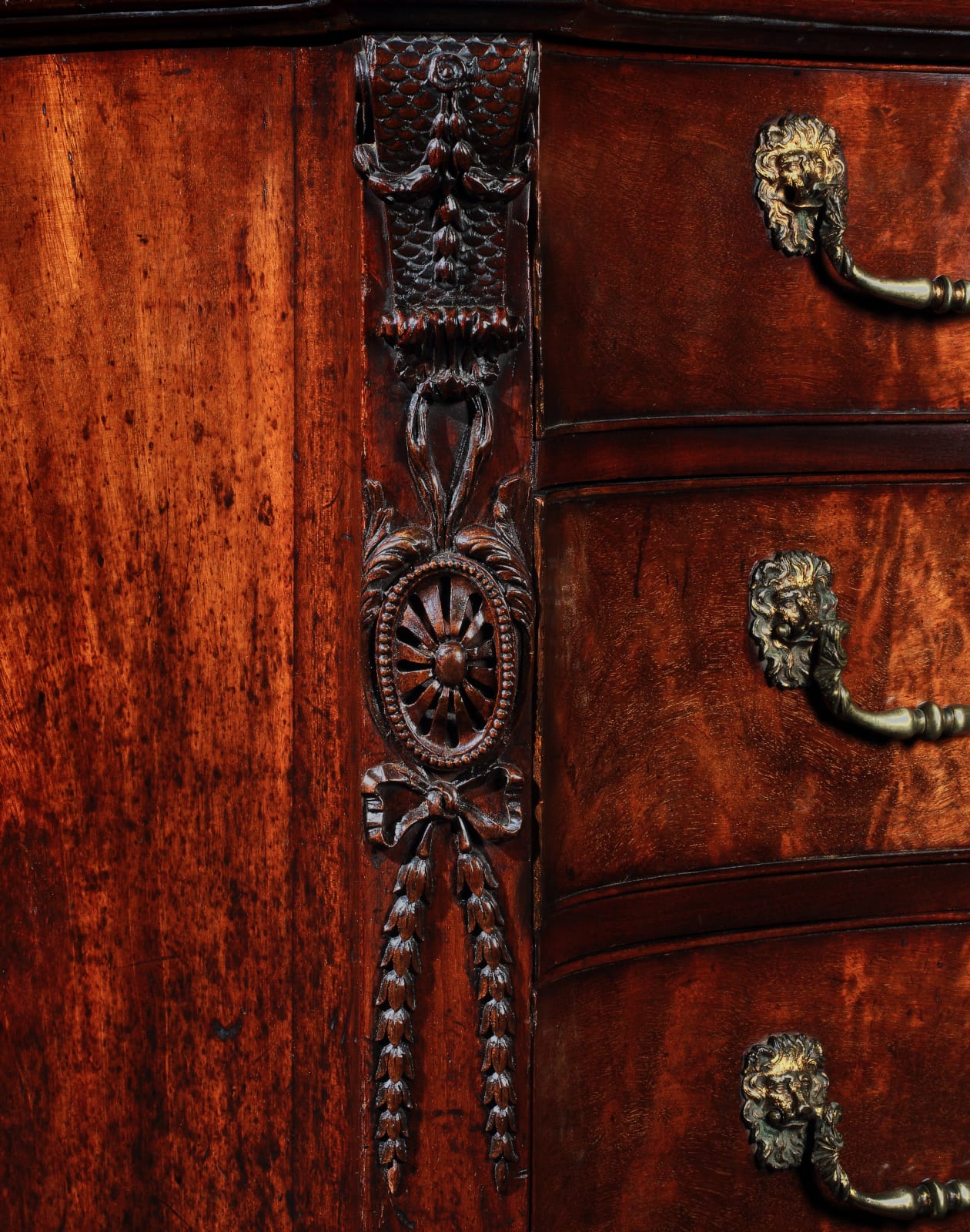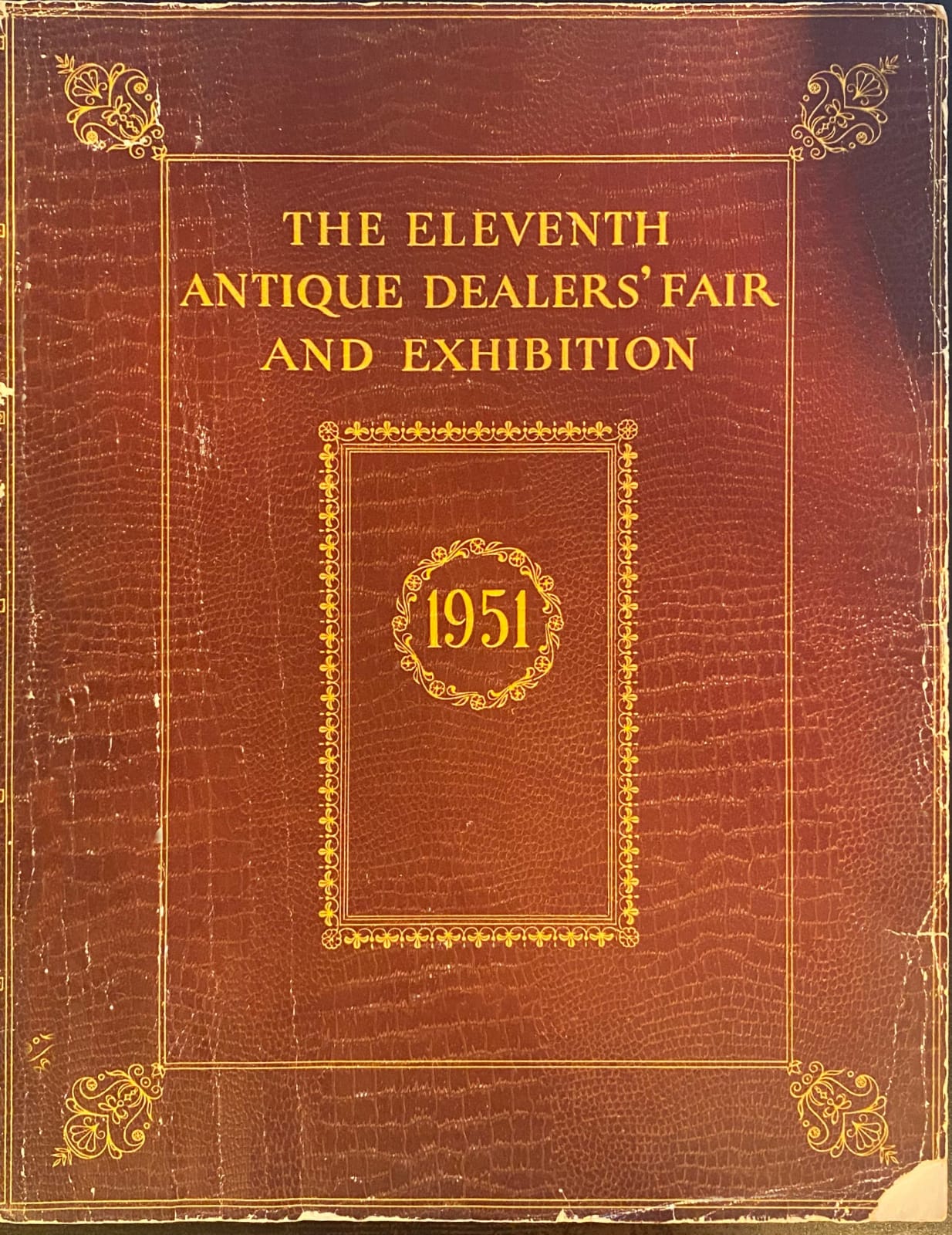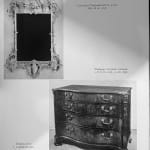AN IMPORTANT GEORGE III MAHOGANY SERPENTINE COMMODE
Width: 43" / 109cm
Depth: 25" / 64cm
Further images
Provenance
Athelhampton House
Exhibitions
The Antique Dealers' Fair And Exhibition 1951
Displayed by: L. Loewenthal
Literature
The Antique Dealers' Fair And Exhibition, 1951, Catalogue p. 63
This superb commode portrays many of the attributes of the workshop of Thomas Chippendale ( 1718-1779). The drawer fronts on this commode retain their original lion mask handles and ‘S’ shaped escutcheons, that were hallmarks of the St Martins Lane Syndicate**. Shaped escutcheons were technically very difficult to create. It is thought that Chippendale favoured this type of escutcheon, due to their intricacy and added security; as to create keys that fitted these escutcheons would have needed a skilled metal worker and was a complex process.
From a construction point of view, the commode is executed in quality mahogany, the original feet are blocked for added support and strength, there is a red clay wash to the underboard, and the back is panelled. These all being hallmarks of commissions by Chippendale.
Many of the design elements discussed, can be seen on documented commissions by Chippendale at Raynham Hall in Norfolk
In addition to the above, the execution and restraint of the carving and overall cabinet work is of the highest order.
The piece remains in exceptional condition throughout being a superb colour that has retained its original surface, this orignality includes the handles, which also retain traces of their original gilding.
** St Martins Lane Syndicate
Vile and Cobb, who later became Royal Cabinetmakers to King George III, formed a syndicate with William Hallett (d.1781) in 1753 that was based in St Martin's Lane, London. St Martins Lane was at the heart of the mid-18th century London furniture trade, with many of the most renowned and skilled designers of the time basing their workshops in this area of London. Other members, and cabinetmakers whose premises were in this area included Thomas Chippendale and Mathias Locke.
The members of this syndicate produced some of the finest commissions of furniture in the 18th Century.
